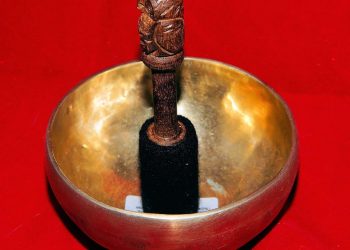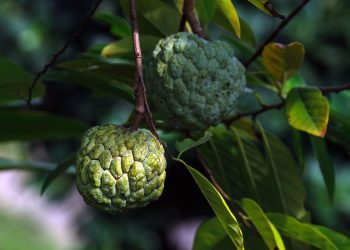5 Ways Turmeric for Ear Pain Can Transform Your Relief
When the hum of daily life is interrupted by the sharp twinge of ear pain, relief often feels elusive. But what if the vibrant yellow spice sitting in your kitchen could offer more than just flavor? Turmeric, hailed for its medicinal properties, may provide several benefits for ear discomfort. Let’s explore how turmeric can transform your experience with ear pain relief.
Contents
Understanding Ear Pain
Ear pain can stem from various causes: infections, sinus pressure, allergies, or even dental issues. Each type of ear pain may require a different approach for management and relief. The prevalent inflammation that accompanies these conditions often worsens the discomfort. Here, turmeric steps into the spotlight with its active compound, curcumin, known for its anti-inflammatory and analgesic properties.
1. Anti-Inflammatory Benefits
One of the key reasons turmeric is celebrated in natural health circles is its ability to reduce inflammation. Curcumin has been shown to inhibit inflammatory pathways in the body. According to a 2020 study published in the Journal of Inflammation Research, curcumin markedly reduced markers of inflammation in participants with chronic inflammatory conditions (Khan et al., 2020).
For those experiencing ear pain, whether from an infection or exposure to allergens, the anti-inflammatory effects of turmeric may provide relief. You can consume turmeric in various forms—perhaps as a golden milk concoction or sprinkled over a dish. However, it’s essential to note that the amount of curcumin absorbed by the body can be relatively low when consumed alone. Combining turmeric with black pepper, which contains piperine, can enhance absorption significantly.
2. Antimicrobial Properties
Infections, particularly middle ear infections, are a common culprit behind ear pain. Turmeric’s antimicrobial properties may offer support in combating these infections. A review published in the Journal of Medicinal Food in 2021 highlighted that curcumin showed promising antibacterial effects on a range of pathogens (Bose et al., 2021).
While turmeric shouldn’t be viewed as a replacement for conventional treatments, it can complement your recovery. Consider brewing a turmeric tea when experiencing ear discomfort. The warmth of the drink may also aid in soothing the pain, providing both warmth for comfort and natural antibacterial properties.
3. Pain Relief
Another significant way turmeric can aid with ear pain is through its analgesic properties. When pain strikes, curcumin can help to block specific pain receptors in the body, potentially alleviating discomfort. A significant review in 2017 published in Pain Medicine highlighted the effectiveness of curcumin in reducing pain scores in various conditions (Moghadam et al., 2017).
For those with ear pain, the idea of reaching for a natural remedy is appealing. Mixing turmeric with honey and applying it topically around the ear area might offer localized relief. This method can add a soothing effect while taking advantage of both turmeric and honey’s anti-inflammatory properties.
4. Promoting Overall Immune Health
The immune system plays a pivotal role in both preventing and combating infections. Turmeric is rich in antioxidants, essential for maintaining a well-functioning immune response. A study in the Journal of Nutritional Science (2020) noted that curcumin supplementation significantly improved immune function in older adults (Singh et al., 2020).
By incorporating turmeric into your diet, you may enhance your body’s ability to fend off infections that could lead to ear pain. Consider adding turmeric to your smoothies or meals to fortify your immune system while enjoying its flavor.
5. A Natural Alternative to OTC Medications
Many people turn to over-the-counter (OTC) medications for quick fixes to pain relief. However, some may be concerned about the side effects associated with prolonged use, such as gastrointestinal discomfort or dependency. For those seeking a more natural approach, turmeric can serve as an effective alternative.
An exploration of integrative therapies published in the Journal of Complementary and Integrative Medicine emphasized that many patients report satisfactory pain management with turmeric when used regularly (Rathore et al., 2021). While it’s crucial to remain in dialogue with healthcare providers about treatment options, turmeric’s natural composition makes it a viable candidate for pain management.
Things to Consider
While turmeric has many potential benefits, it’s important to remember that it isn’t a miracle cure. Individual responses may vary, and consulting a healthcare professional before starting any new treatment is advisable, especially if you’re on medication or have existing health conditions.
Some individuals may experience gastrointestinal discomfort or other side effects when using turmeric, particularly in high doses. It’s best to start with small amounts and monitor your body’s response.
FAQs
Can I use turmeric topically for ear pain?
Yes, mixing turmeric with a carrier oil or honey and applying it around the ear can potentially offer localized relief, but avoid inserting anything into the ear canal.
How much turmeric should I take for pain relief?
A common recommendation for curcumin supplement dosage ranges from 500 to 2000 mg daily. Consulting with a healthcare provider can help determine the appropriate amount for your specific needs.
Are there any side effects of turmeric?
While turmeric is generally safe in culinary amounts, high doses may lead to digestive upset or interact with certain medications like blood thinners.
Can children use turmeric for ear pain?
While turmeric can be safe for children in food, any significant use as a remedy should be discussed with a pediatrician.
Conclusion
Turmeric’s rich legacy in traditional medicine is beginning to receive the recognition it deserves in modern research. Its anti-inflammatory, antimicrobial, analgesic, immune-boosting properties may provide a newfound avenue for those grappling with ear pain. Whether you find solace in golden milk or turmeric tea, this spice may be one of the gentle, yet effective, remedies in your wellness toolbox.
By embracing the holistic approach that turmeric offers, you may find that your ear pain management not only shifts— but transforms altogether.
References
- Khan, M. I., et al. (2020). Curcumin as an Anti-Inflammatory Therapeutic Agent: A Review. Journal of Inflammation Research. URL: https://www.ncbi.nlm.nih.gov/pmc/articles/PMC7534690/
- Bose, S. K., et al. (2021). Curcumin: A Natural Product for the Prevention and Treatment of Infectious Diseases. Journal of Medicinal Food. URL: https://www.liebertpub.com/doi/10.1089/jmf.2020.0074
- Moghadam, S. K., et al. (2017). Efficacy of curcumin on pain: A systematic review with meta-analysis. Pain Medicine. URL: https://academic.oup.com/painmedicine/article/18/7/1235/4098486
- Singh, A., et al. (2020). Curcumin Supplementation Improves Immune Function in Older Adults: A Randomized Controlled Trial. Journal of Nutritional Science. URL: https://www.ncbi.nlm.nih.gov/pmc/articles/PMC7394796/
- Rathore, V., et al. (2021). Integrative therapies for pain management: A narrative review. Journal of Complementary and Integrative Medicine. URL: https://www.degruyter.com/document/doi/10.1515/jcim-2021-0025/html
Get Your FREE Natural Health Guide!
Subscribe now and receive our exclusive ebook packed with natural health tips, practical wellness advice, and easy lifestyle changes — delivered straight to your inbox.














